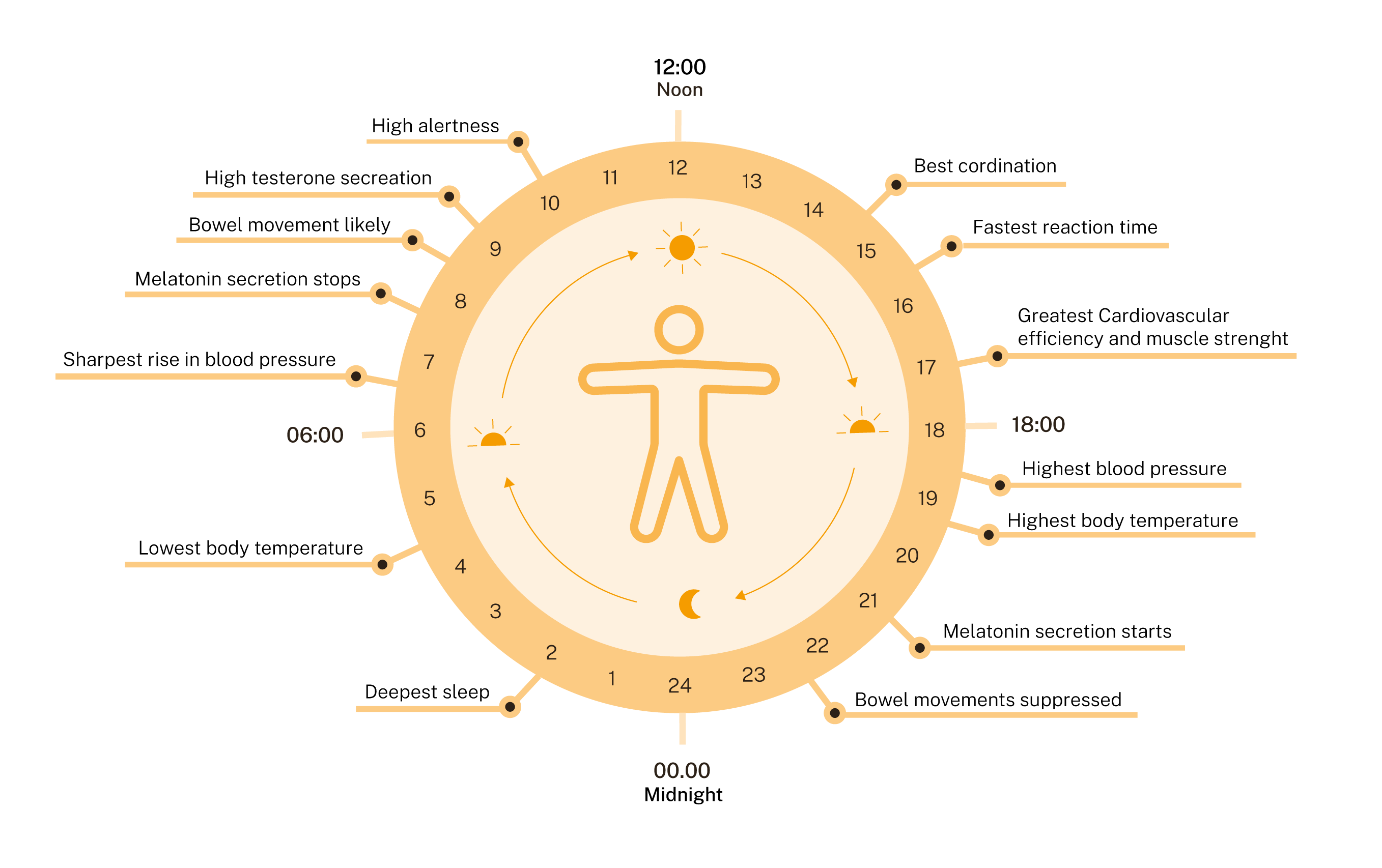Almost all of our bodily processes depend on the alternation between light and darkness – a stable circadian rhythm is therefore crucial for our well-being. However, there has been a tendency to underestimate and neglect this fundamental need when planning and implementing lighting in the buildings we frequent daily, and it has consequences. A lighting design that does not consider our natural light and dark needs is detrimental to our health.
In most places we visit, the lighting is static. This means that the intensity and color of the light remain the same regardless of the time of day, often with limited settings such as an "on and off"-function. Additionally, it is not uncommon for lighting solutions to be based on standards, aesthetic parameters, and personal preferences, rather than the actual needs of the users. But why is it important to pay attention to the needs of humans when developing lighting design for the built environment? And how dangerous can a poor lighting design really be?

The Key to a Well-Functioning Brain
Our mental health relies heavily on receiving the right light at the right time and maintaining a strong circadian rhythm. We need the active and bright day and the dark and restful night to have a well-functioning brain and psyche. Consider the fatigue and sadness one can experience during the winter months when the sky is grey, the days are short, and the sun is scarce. Winter depression is a classic example of what a disrupted circadian rhythm can do to people, as research has shown that the lack of daylight is the direct cause of winter depression. A lack of natural daylight or exposure to the wrong light at the wrong time can disturb our internal clock, leading to insomnia or excessive sleepiness during the day. All sleep problems are associated with an increased risk of depression and, in the long run, dementia. Specifically, a poor lighting design, such as intense white light in the evening and at night, can inhibit the production of the hormone melatonin - and melatonin plays a crucial role in our nightly recovery and sleep. This means that a poor lighting design can disrupt the circadian rhythm, resulting in sleep and recovery problems, mood disturbances, and an increased risk of depression. But it's not just our mood and mental health that are affected by the light we are exposed to.
The Dark Side of Light
Despite the growing focus on creating a healthy indoor environment, attention is often directed towards air quality and noise levels rather than lighting design. This is surprising considering the negative impact that poor lighting can have on our overall health. Our circadian rhythm forms the foundation of our well-being, and without a properly functioning rhythm, we simply cannot thrive. Just as our mood and mental health rely on the natural rhythm of light, many of our physiological processes do as well. In other words, light has a dark side when it is not used and designed correctly.

By being exposed to the wrong light at the wrong time, many of our bodily processes will be disturbed, put on hold, or completely thrown off rhythm and begin to counteract each other. It may sound extreme, but if you primarily expose yourself to the wrong light at the wrong time, you are not only at risk of suffering mentally, but you can also experience physical problems such as a weakened immune system, obesity, diabetes, poor sleep, and decreased muscle strength. Currently, extensive research is going on in this area, and more significant studies are emerging that document these connections.
No Glare and Flicker
However, it is not only the strength and intensity (providing the right light at the right time) that should be considered in lighting design. Light that produces glare or flickering can also have an impact on our well-being. Even though glare and flickering may not always be visible to the naked eye, they can be felt. They can cause psychological discomfort such as stress and irritability, as well as physical discomfort in the form of eye strain and headaches.
Designing Thoughtful Lighting Environments
Lighting design is about much more than just aesthetics. It plays a crucial role in our mental and physical health. Without considering the importance of light for people in the built environment, we risk ending up with a poor lighting design that disrupts our circadian rhythm and becomes detrimental to our health. Our need for artificial lighting is here to stay, so it is essential that we prioritize well-thought-out lighting environments and develop designs that support and enhance our physical and mental well-being.
Our recommendation for a good lighting design is simple: ensure that the implemented lighting provides the right lighting at the right time - without glare and flickering - and make sure it is designed to support the specific needs of the users.

